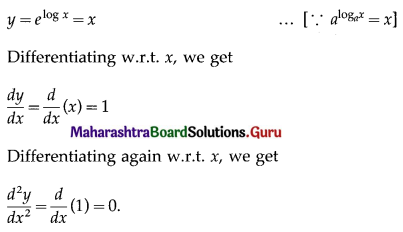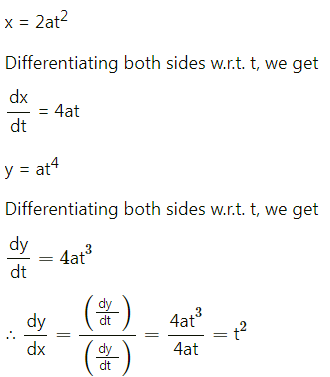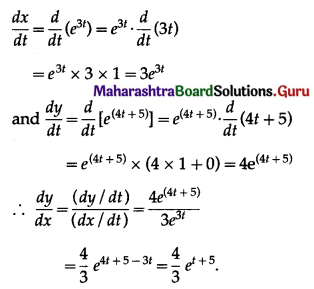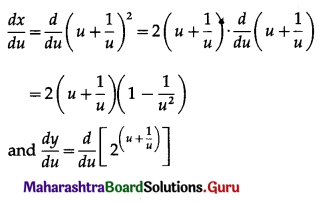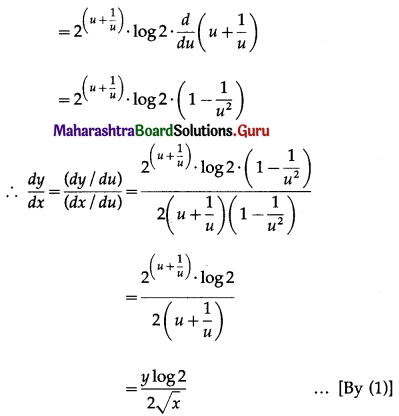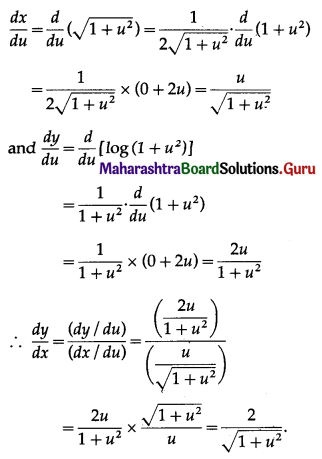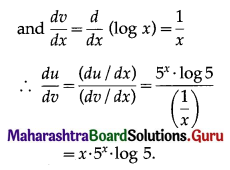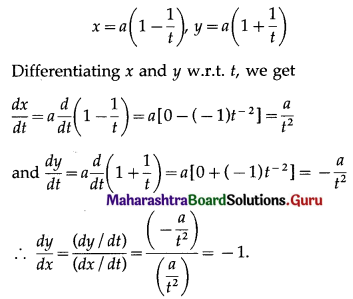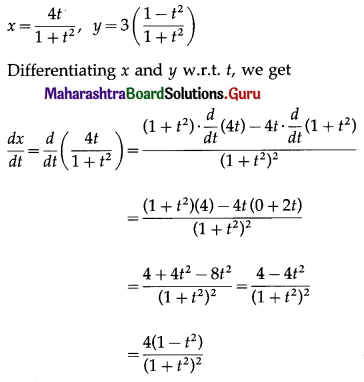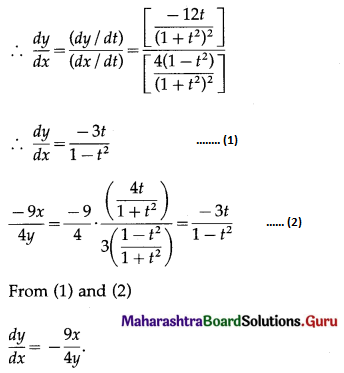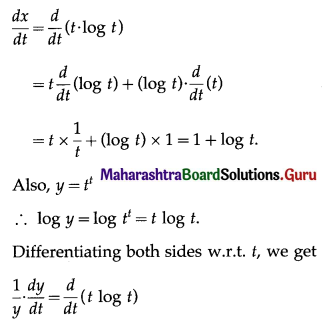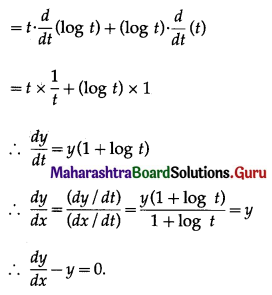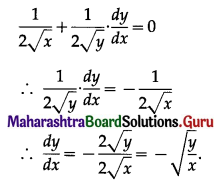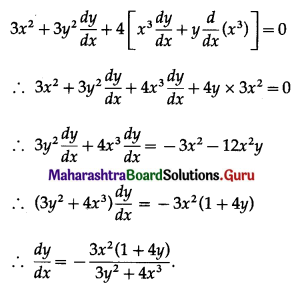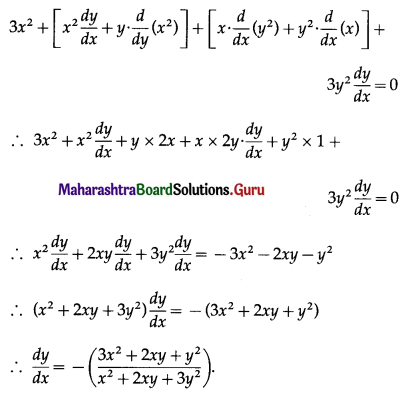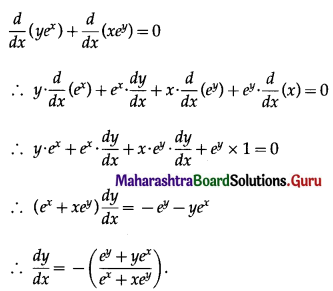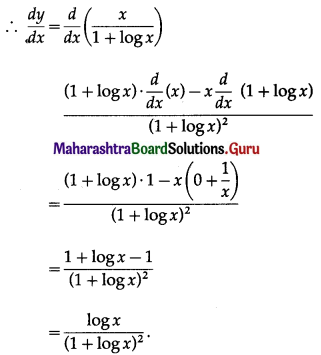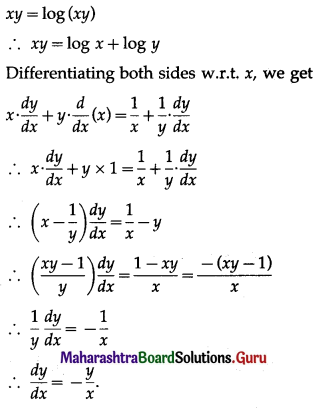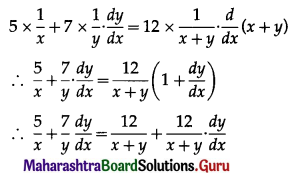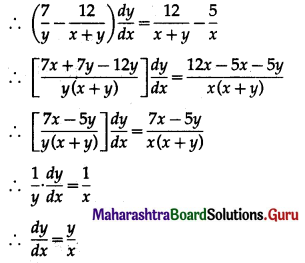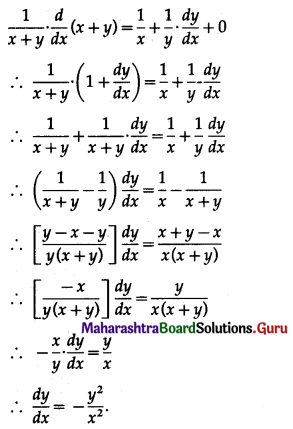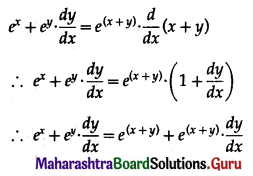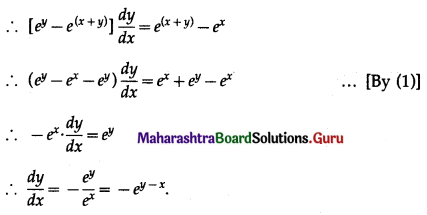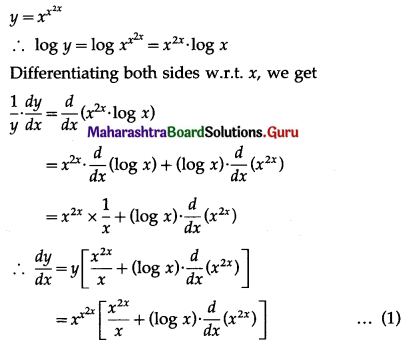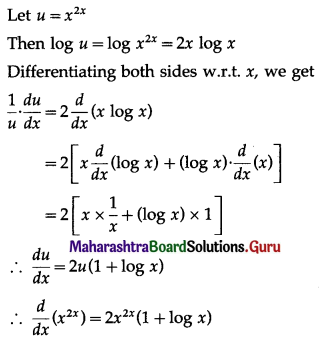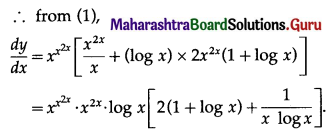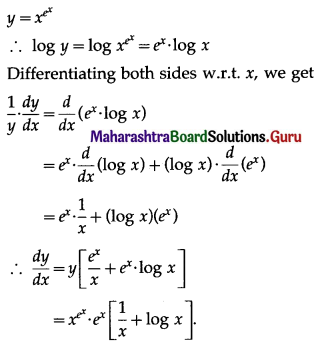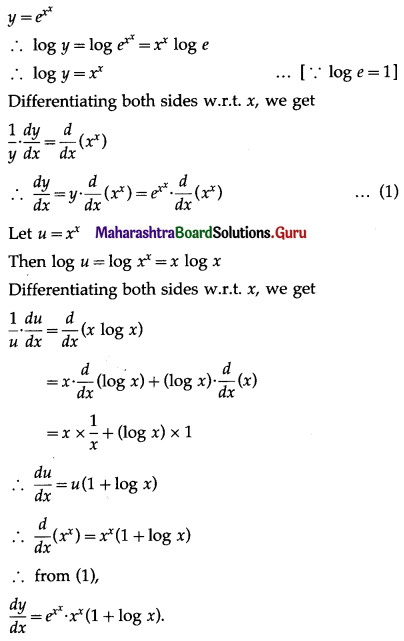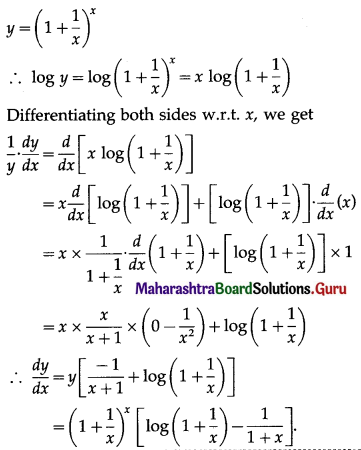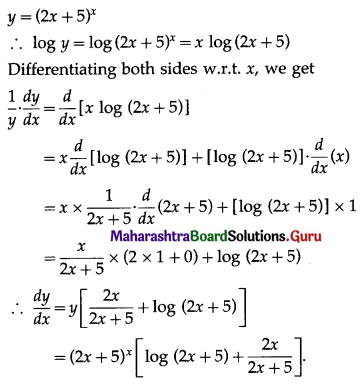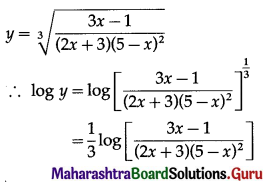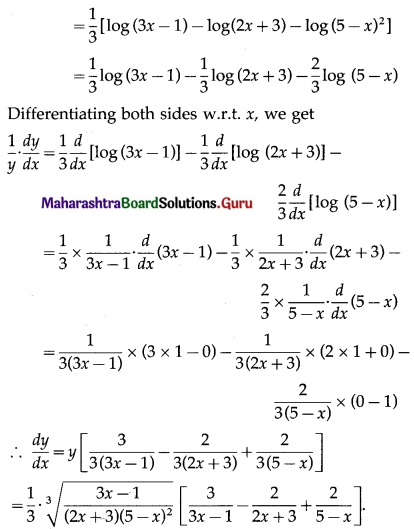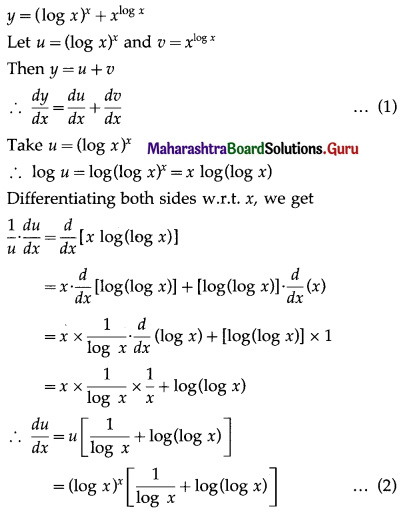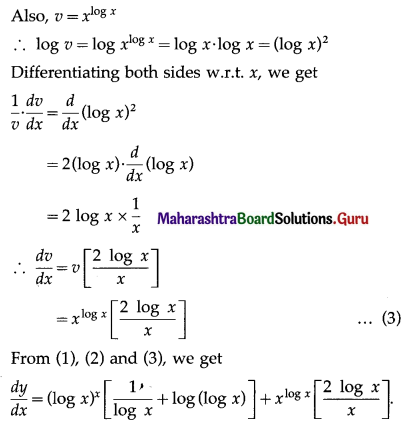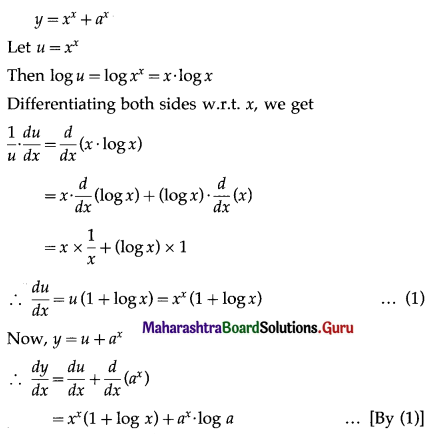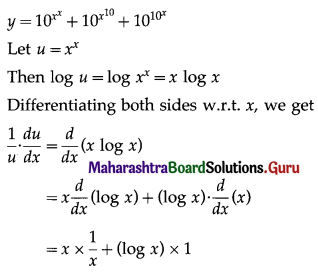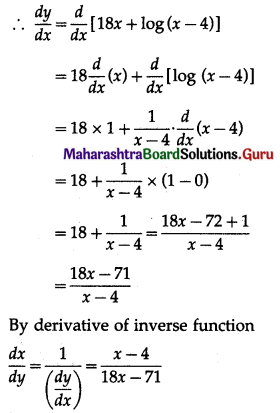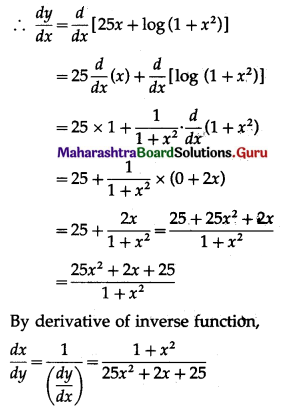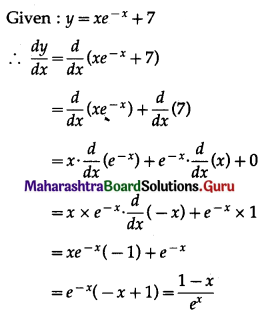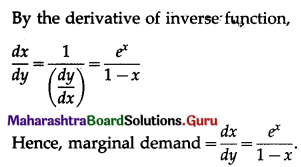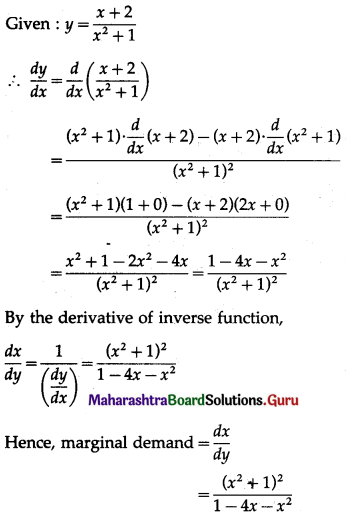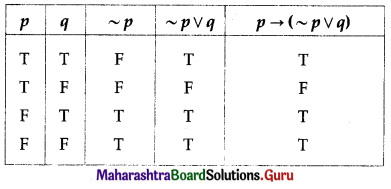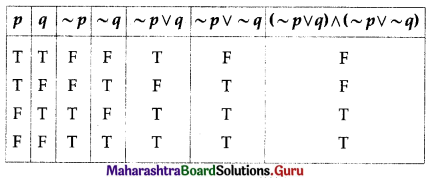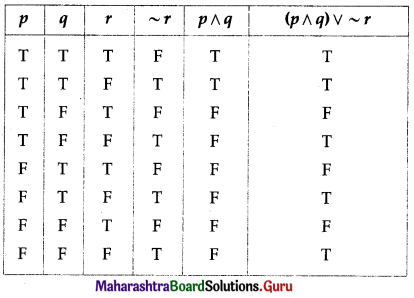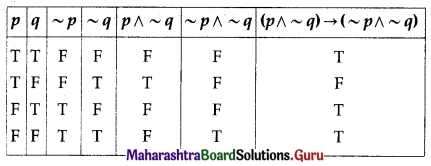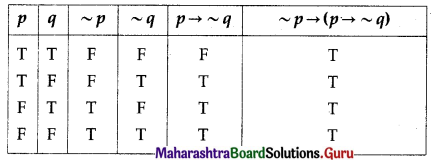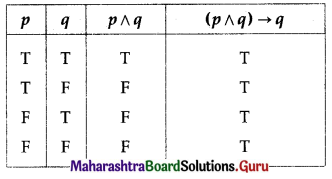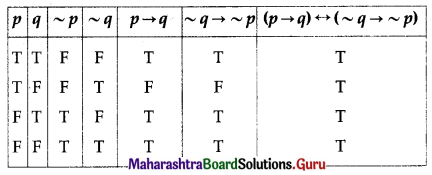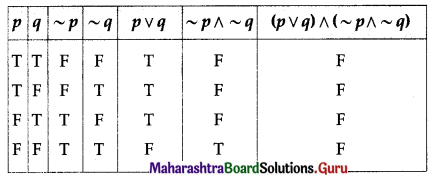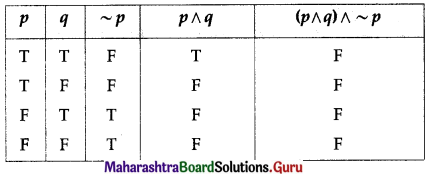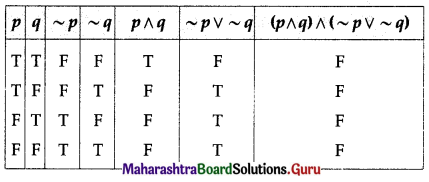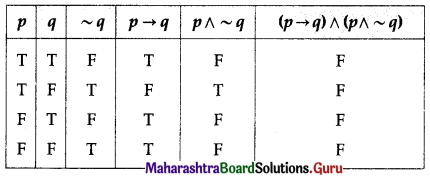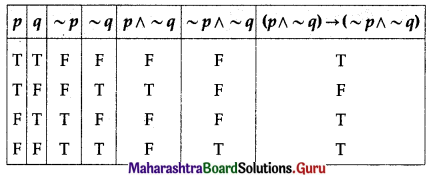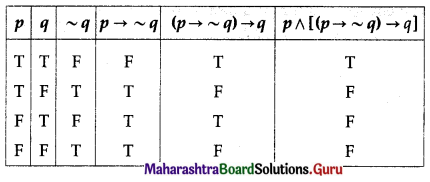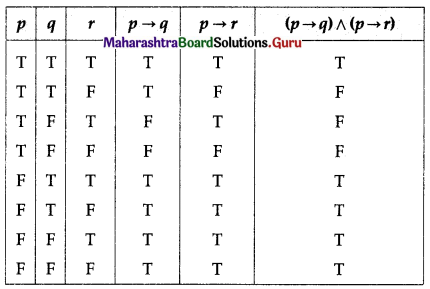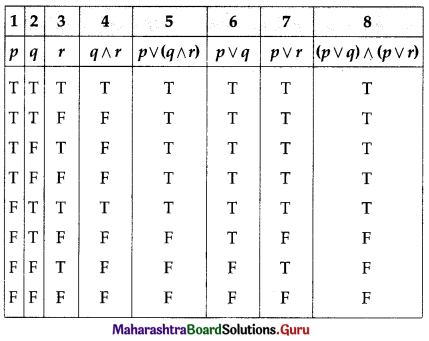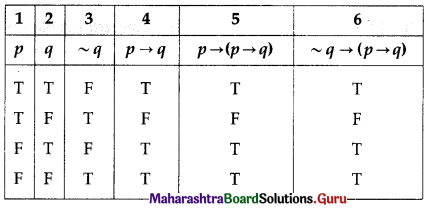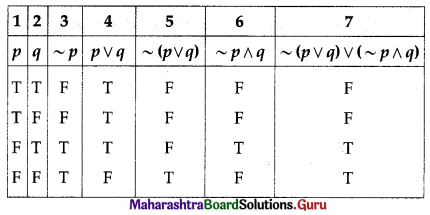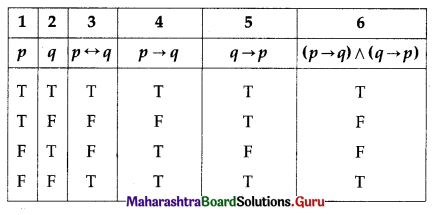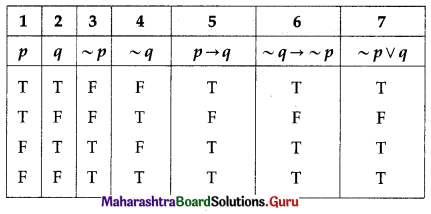Balbharati Maharashtra State Board 12th Commerce Maths Solution Book Pdf Chapter 2 Matrices Ex 2.3 Questions and Answers.
Maharashtra State Board 12th Commerce Maths Solutions Chapter 2 Matrices Ex 2.3
Question 1.
Evaluate:
(i) \(\left[\begin{array}{l}
3 \\
2 \\
1
\end{array}\right]\left[\begin{array}{lll}
2 & -4 & 3
\end{array}\right]\)
Solution:
\(\left[\begin{array}{l}
3 \\
2 \\
1
\end{array}\right]\left[\begin{array}{lll}
2 & -4 & 3
\end{array}\right]\) = \(\left[\begin{array}{rrr}
6 & -12 & 9 \\
4 & -8 & 6 \\
2 & -4 & 3
\end{array}\right]\)
(ii) \(\left[\begin{array}{lll}
2 & -1 & 3
\end{array}\right]\left[\begin{array}{l}
4 \\
3 \\
1
\end{array}\right]\)
Solution:
\(\left[\begin{array}{lll}
2 & -1 & 3
\end{array}\right]\left[\begin{array}{l}
4 \\
3 \\
1
\end{array}\right]\) = [8 – 3 + 3] = [8]

Question 2.
If A = \(\left[\begin{array}{ccc}
-1 & 1 & 1 \\
2 & 3 & 0 \\
1 & -3 & 1
\end{array}\right]\), B = \(\left[\begin{array}{lll}
2 & 1 & 4 \\
3 & 0 & 2 \\
1 & 2 & 1
\end{array}\right]\). State whether AB = BA? Justify your answer.
Solution:
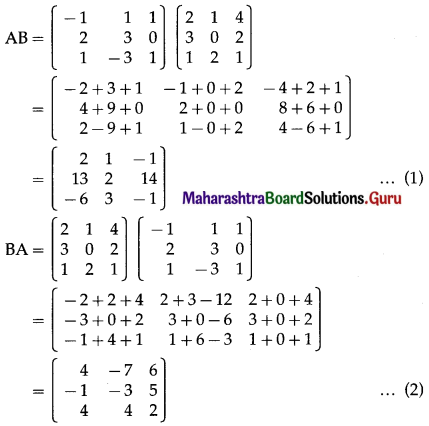
From (1) and (2), AB ≠ BA.
Question 3.
Show that AB = BA, where A = \(\left[\begin{array}{lll}
-2 & 3 & -1 \\
-1 & 2 & -1 \\
-6 & 9 & -4
\end{array}\right]\), B = \(\left[\begin{array}{rrr}
1 & 3 & -1 \\
2 & 2 & -1 \\
3 & 0 & -1
\end{array}\right]\)
Solution:
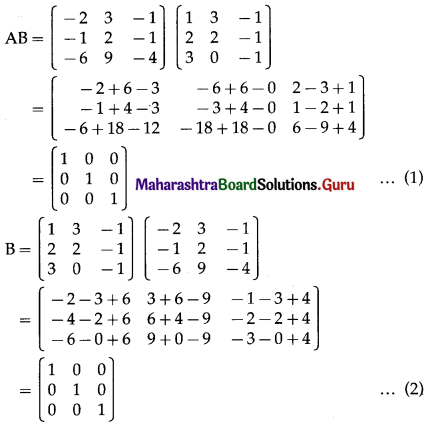
From (1) and (2), AB = BA.
Question 4.
Verify A(BC) = (AB)C, if A = \(\left[\begin{array}{lll}
1 & 0 & 1 \\
2 & 3 & 0 \\
0 & 4 & 5
\end{array}\right]\), B = \(\left[\begin{array}{cc}
2 & -2 \\
-1 & 1 \\
0 & 3
\end{array}\right]\), and C = \(\left[\begin{array}{rrr}
3 & 2 & -1 \\
2 & 0 & -2
\end{array}\right]\)
Solution:
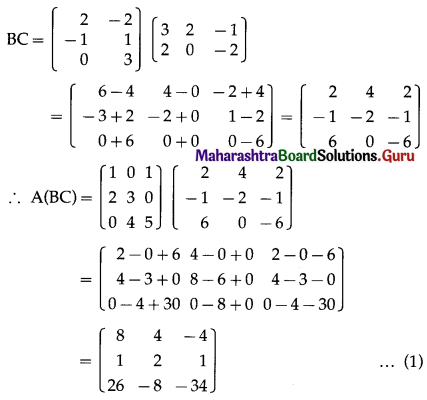
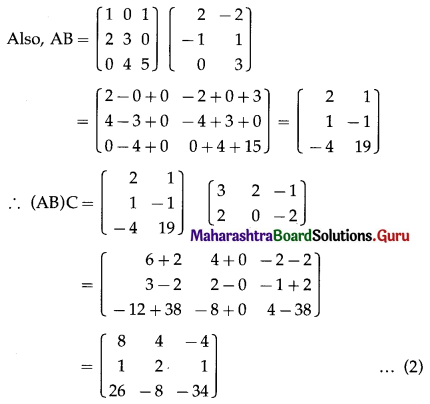
From (1) and (2), A(BC) = (AB)C.

Question 5.
Verify that A(B + C) = AB + AC, if A = \(\left[\begin{array}{cc}
4 & -2 \\
2 & 3
\end{array}\right]\), B = \(\left[\begin{array}{cc}
-1 & 1 \\
3 & -2
\end{array}\right]\) and C = \(\left[\begin{array}{cc}
4 & 1 \\
2 & -1
\end{array}\right]\)
Solution:

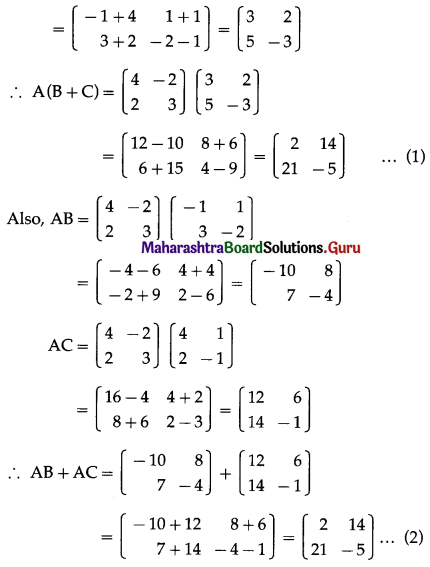
From (1) and (2), A(B + C) = AB + AC.
Question 6.
If A = \(\left[\begin{array}{ccc}
4 & 3 & 2 \\
-1 & 2 & 0
\end{array}\right]\), B = \(\left[\begin{array}{cc}
1 & 2 \\
-1 & 0 \\
1 & -2
\end{array}\right]\), show that matrix AB is non-singular.
Solution:

Hence, AB is a non-singular matrix.
Question 7.
If A + I = \(\left[\begin{array}{ccc}
1 & 2 & 0 \\
5 & 4 & 2 \\
0 & 7 & -3
\end{array}\right]\), find the product (A + I)(A – I).
Solution:


Question 8.
If A = \(\left[\begin{array}{lll}
1 & 2 & 2 \\
2 & 1 & 2 \\
2 & 2 & 1
\end{array}\right]\), show that A2 – 4A is a scalar matrix.
Solution:
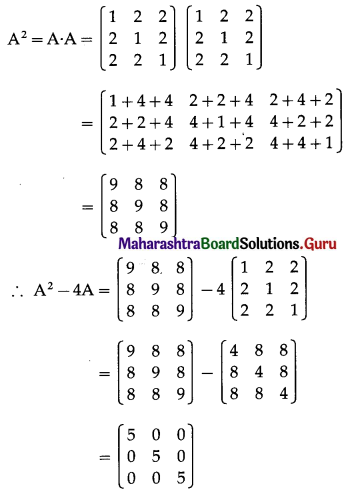
which is a scalar matrix.
Question 9.
If A = \(\left[\begin{array}{cc}
1 & 0 \\
-1 & 7
\end{array}\right]\), find k so that A2 – 8A – kI = O, where I is a 2 × 2 unit matrix and O is null matrix of order 2.
Solution:

By equality of matrices,
-k – 7 = 0
∴ k = -7.
Question 10.
If A = \(\left[\begin{array}{cc}
3 & 1 \\
-1 & 2
\end{array}\right]\), prove that A2 – 5A + 7I = 0, where I is a 2 × 2 unit matrix.
Solution:
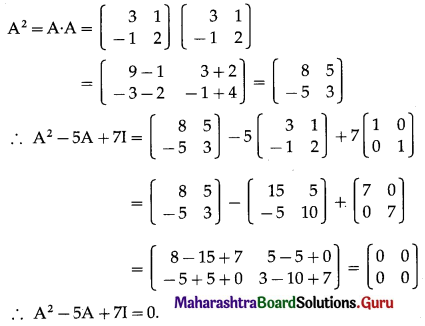
Question 11.
If A = \(\left[\begin{array}{cc}
1 & 2 \\
-1 & -2
\end{array}\right]\), B = \(\left[\begin{array}{cc}
2 & a \\
-1 & b
\end{array}\right]\) and if(A + B)2 = A2 + B2, find values of a and b.
Solution:
(A + B)2 = A2 + B2
∴ (A + B)(A + B) = A2 + B2
∴ A2 + AB + BA + B2 = A2 + B2
∴ AB + BA = 0
∴ AB = -BA
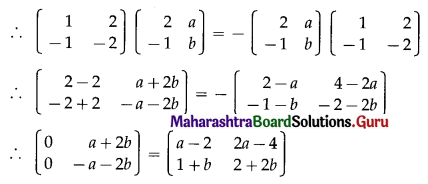
By the equality of matrices, we get
0 = a – 2 ……..(1)
0 = 1 + b ……..(2)
a + 2b = 2a – 4 ……..(3)
-a – 2b = 2 + 2b ……..(4)
From equations (1) and (2), we get
a = 2 and b = -1
The values of a and b satisfy equations (3) and (4) also.
Hence, a = 2 and b = -1.

Question 12.
Find k, if A = \(\left[\begin{array}{ll}
3 & -2 \\
4 & -2
\end{array}\right]\) and A2 = kA – 2I.
Solution:
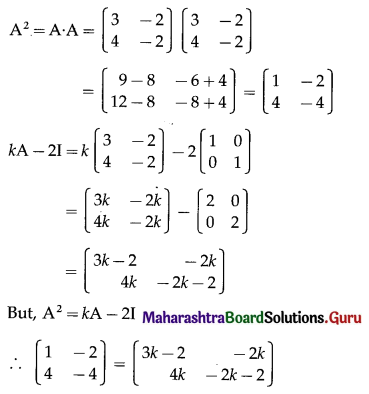
By equality of matrices,
1 = 3k – 2 ……..(1)
-2 = -2k ……..(2)
4 = 4k ……..(3)
-4 = -2k – 2 ……..(4)
From (2), k = 1.
k = 1 also satisfies equation (1), (3) and (4).
Hence, k = 1.
Question 13.
Find x and y, if \(\left\{4\left[\begin{array}{ccc}
2 & -1 & 3 \\
1 & 0 & 2
\end{array}\right]-\left[\begin{array}{ccc}
3 & -3 & 4 \\
2 & 1 & 1
\end{array}\right]\right\}\left[\begin{array}{c}
2 \\
-1 \\
1
\end{array}\right]=\left[\begin{array}{c}
x \\
y
\end{array}\right]\)
Solution:

By equality of matrices,
x = 19 and y = 12.

Question 14.
Find x, y, z, if \(\left\{3\left[\begin{array}{ll}
2 & 0 \\
0 & 2 \\
2 & 2
\end{array}\right]-4\left[\begin{array}{cc}
1 & 1 \\
-1 & 2 \\
3 & 1
\end{array}\right]\right\}\left[\begin{array}{l}
1 \\
2
\end{array}\right]=\left[\begin{array}{c}
x-3 \\
y-1 \\
2 z
\end{array}\right]\)
Solution:


By equality of matrices,
-6 = x – 3, 0 = y – 1 and -2 = 2z
∴ x = -3, y = 1 and z = -1.

Question 15.
Jay and Ram are two friends. Jay wants to buy 4 pens and 8 notebooks. Ram wants to buy 5 pens and 12 notebooks. The price of one pen and one notebook was ₹ 6 and ₹ 10 respectively. Using matrix multiplication, find the amount each one of them requires for buying the pens and notebooks.
Solution:
The given data can be written in matrix form as:
Number of Pens and Notebooks

For finding the amount each one of them requires to buy the pens and notebook, we require the multiplication of the two matrices A and B.
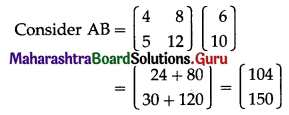
Hence, Jay requires ₹ 104 and Ram requires ₹ 150 to buy the pens and notebooks.
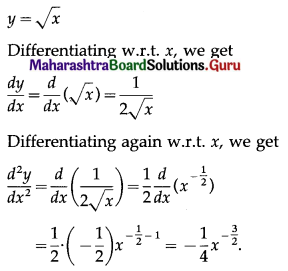
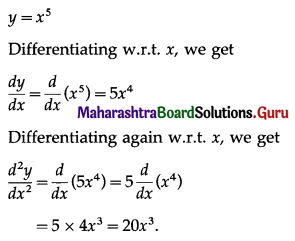
![]()
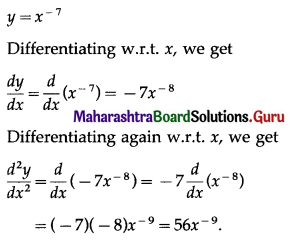
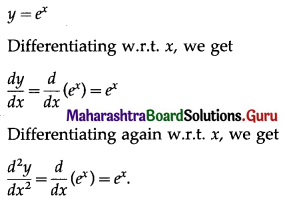
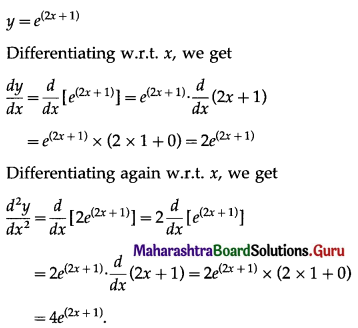
![]()
